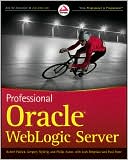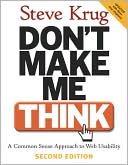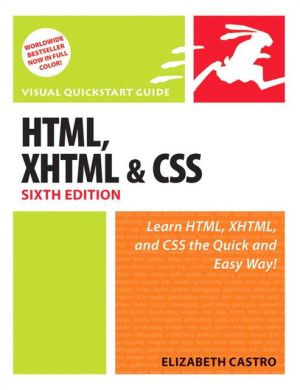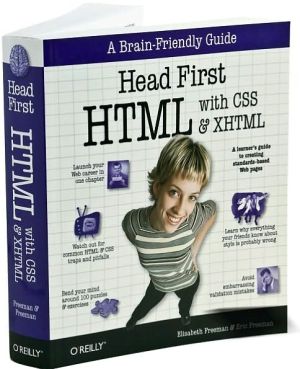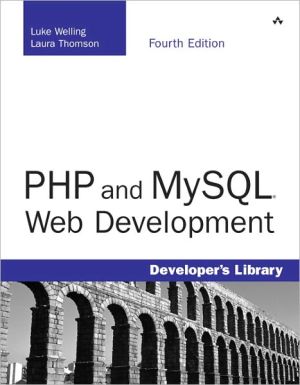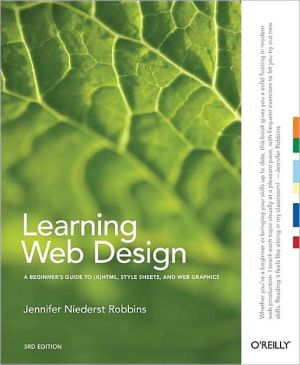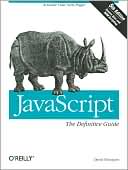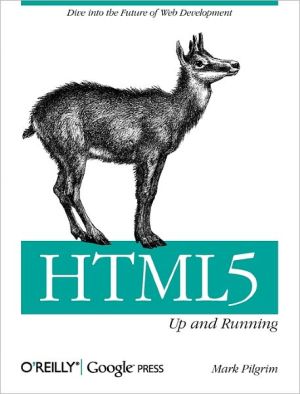Professional Oracle WebLogic Server
Search in google:
Best practices for developing WebLogic Server applications Written by a team of Oracle insiders and experts in the development of enterprise-class Java EE applications, this professional-level book provides best practices for developing and deploying WebLogic Server applications. The authors share their real-world experience and knowledge of WebLogic Server and its features to help you understand not only how things can be done, but also how things should be done. Includes tips for choosing a Java EE application architecture Walks you through various design solutions, architectures, construction techniques, deployment options, and management techniques Features a realistic example application that leverages key technologies such as JSP, Spring MVC, EJB 3.0, JPA, and JAX-WS Details each aspect of the decisions made during the development and deployment of the sample application Contains best practices for configuring, managing, and tuning development and production environments Explores techniques for using WebLogic Server JMS and WebLogic security Wrox Professional guides are planned and written by working programmers to meet the real-world needs of programmers, developers, and IT professionals. Focused and relevant, they address the issues technology professionals face every day. They provide examples, practical solutions, and expert education in new technologies, all designed to help programmers do a better job. Programmer Forums Join our Programmer to Programmer forums to ask and answer programming questions about this book,join discussions on the hottest topics in the industry, and connect with fellow programmers from around the world. Code Downloads Take advantage of free code samples from this book, as well as code samples from hundreds of other books, all ready to use. Read More Find articles, ebooks, sample chapters and tables of contents for hundreds of books, and more reference resources on programming topics that matter to you. wrox.com
Introduction. Chapter 1: Building Web Applications in WebLogic. Java Servlets and JSP Key Concepts. Web Application Best Practices. Chapter Review. Chapter 2: Choosing a Web Application Architecture. Architecture Key Concepts. Presentation-Tier Architecture Selection. Candidate Presentation-Tier Architectures. Chapter Review. Chapter 3: Designing an Example Java EE Application. Application Requirements. Business DomainModels. Presentation Requirements. Web Application Architecture. Presentation Approach. Business-Tier Interfaces. Chapter Review. Chapter 4: Building an Example Web Application. Overview of Application Components. Constructing the Application Skeleton. Constructing the User Site Components. Construction of Administration Site Components. Chapter Review. Chapter 5: Packaging and Deploying WebLogic Web Applications. PackagingWeb Applications. DeployingWeb Applications. Chapter Review. Chapter 6: Building Enterprise JavaBeans in WebLogic Server. EJB Technology Overview. EJB 3.0. EJB Component Types. The Java Persistence API. WebLogic Server EJB Container. General WebLogic Server EJB Features. Session Bean Features. Message-Driven Bean Features. OpenJPA and Kodo Features. Deployment Descriptors or Annotations? Chapter Review. Chapter 7: Building an Example EJB Application. Business Layer Requirements. Business Layer Architecture Options. The bigrez.com Implementation. Using TopLink instead of Kodo. ChapterReview. Chapter 8: Packaging and Deploying WebLogic Applications. Creating an EJB Archive File. Packaging JPA Persistence Units. Enterprise Applications. Deploying Applications. Chapter Review. Chapter 9: Developing and Deploying Web Services. Summarizing Web Services Standards. CreatingWeb Services with WebLogic Server. Moving Past the Basics. UsingWeb Services Security. Adding Web Services to bigrez.com. Chapter Review. Chapter 10: Using WebLogic JMS. JMS Key Concepts. The WebLogic JMS Provider. WebLogic JMS Application Design. WebLogic JMS Application Programming. External JMS Providers. Chapter Review. Chapter 11: Using WebLogic Security. WebLogic Security Overview. WebLogic Security Framework. Using External Security Stores. Setting Up SSL/TLS. Writing Security-Aware Java Clients. Managing Application Security. Single Sign-On. Chapter Review. Chapter 12: Administering and Deploying Applications in WebLogic Server. WebLogic Architecture Key Concepts. WebLogic Administration Key Concepts. Configuring aWebLogic Server Domain. Monitoring WebLogic Server Applications. ManagingWebLogic Server Applications. Chapter Review. Chapter 13: Optimizing WebLogic Server Performance. Overview of System Performance. Performance Best Practices. Troubleshooting Performance Problems. Chapter Review. Chapter 14: Development Environment Best Practices. InstallingWebLogic Server Software. Development Project Structure. Streamlining the Development Cycle. Establishing a Build Process. Integrated Development Environments. Creating a Unit Testing Infrastructure. Chapter Review. Chapter 15: Production Environment Best Practices. Deployment Strategies. Global and Local Traffic Management. Production Security Strategies. Chapter Review. Index.
